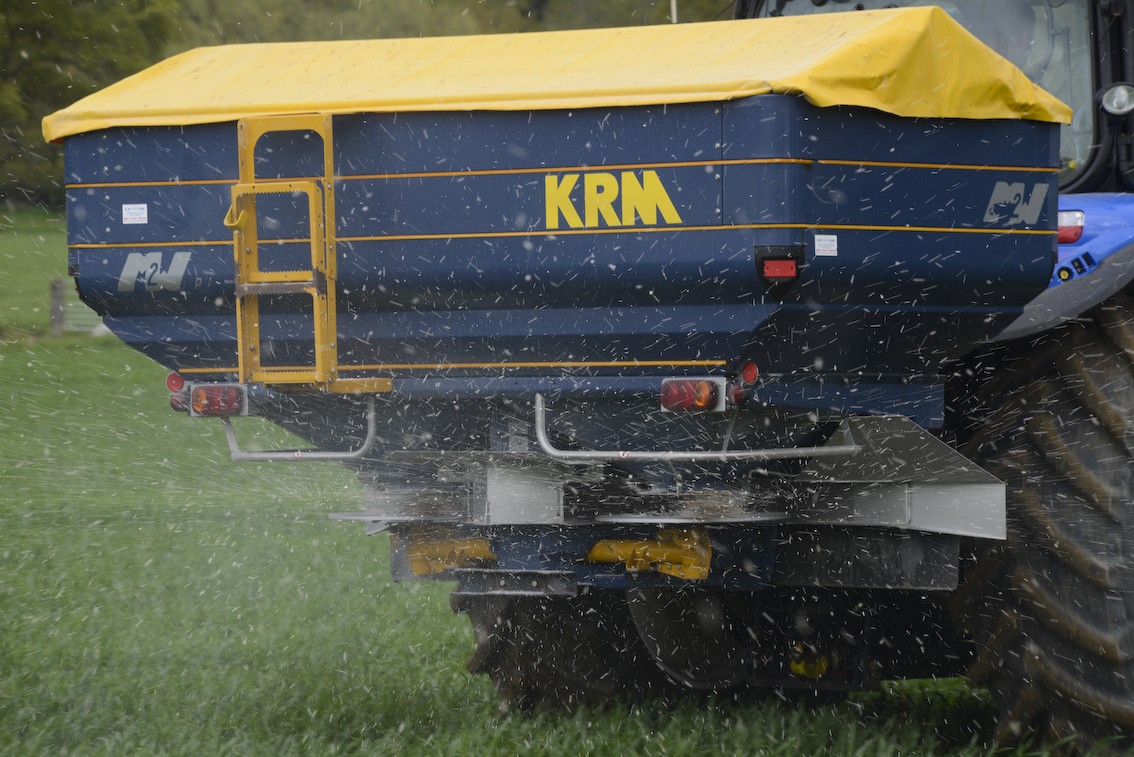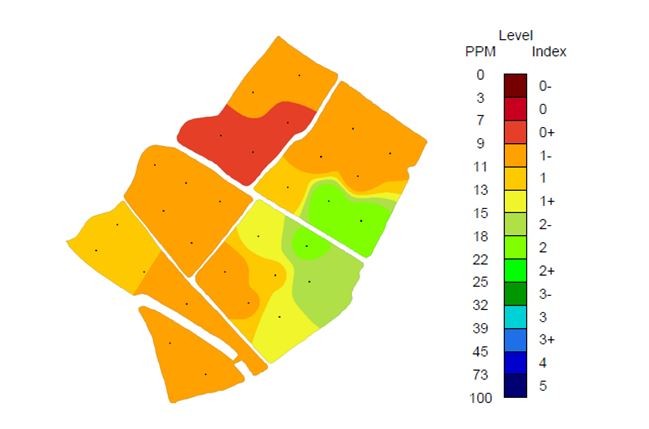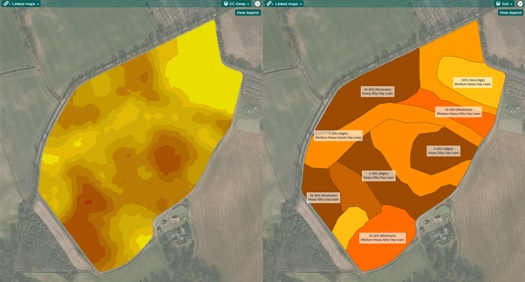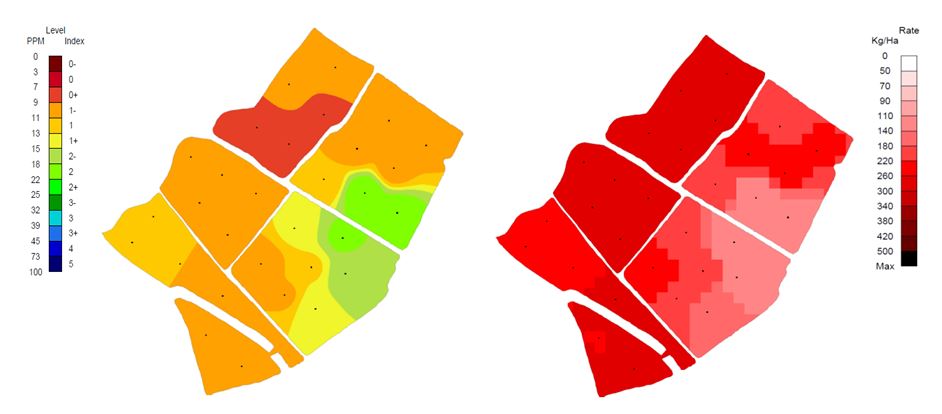P and K blog series: The important considerations for post-harvest applications
This is the last entry in our series of blogs looking at the importance of P and K applications. To read the entries published prior to this, please click the links below:
The stark variation across the country has continued into harvest this year, with some areas completed a couple of weeks ago while others are struggling to make real headway as a result of the wet weather. Where completed, the SOYL applications team has been busy processing fertiliser recommendations ready for post-harvest P and K applications - allowing new season orders to be booked.
For many growers though, doing this raises the question: What considerations should be made when planning P and K management?
Know your soil index levels
If an analysis of your soil shows reserves of P and K at index level 2 or above, the exact timing for fertiliser applications isn't normally considered as vital. Rather, these levels can indicate that crop nutrient demand can be maintained from the soil in the short term, but will need to be topped up with a maintenance application later in the farming year when convenient.
However, where soil analysis shows index 0 or index 1, nutrient supply to the crop - particularly with phosphate and at the early stages after drilling - will not be enough to achieve optimum establishment and root development.
Through the use of soil analysis and SOYL's nutrient mapping technology, fields, or areas of fields, that have low phosphate indices can be better targeted with fresh applications of readily-available phosphate fertiliser. The timing of these applications should be at (or even before) drilling so that the soil contains enough available nutrients to allow sufficient uptake to occur.
This analysis is also crucial given the significant challenges caused by the wet weather throughout autumn,winter and now late summer. For some it may have led to soil structure problems, as fields had to be worked or travelled on in poor conditions. As a result, root growth in the new season may be restricted, so ensuring that you have fresh fertiliser close to a new seedling – even at index 2 – will be a sensible policy.
When you're planning ahead, don't forget to look back too
Given the change to many application plans on the back of the poor weather last season, you should check your records in case any muck applications originally planned for last autumn were missed or changed. In addition, if subsequent P and K fertiliser was not applied then the requirement from last year should be transferred to this coming year. Furthermore, a lot of growers have removed straw this year, which will have removed further nutrients from the field. However yields this harvest have been extremely variable so it will also be important to accurately account for this in future recommendations.It does though go without saying thatmissing applications now will only mean the mining of existing soil nutrients, eventually leading to yield loss if levels drop below index 2.
Prioritising efficient and effective applications
If you are using (or considering using) the drill to help with fertiliser placement, it is a great way to encourage the uptake of nutrients - particularly phosphate which doesn't move in the soil. However, it's important to remember that crop removal at harvest will be the same whether broadcast or placed.
With that in mind, any nutrients placed with the drill should be removed from the total amount required on a 1:1 basis. So, if 40kg is applied through the drill, then only 40kg should be deducted from the total requirement. 40kg/ha applied in the seedbed is not worth 80kg/ha of broadcast fertiliser. These calculations can be included in your recommendations from SOYL, with the remainder being spread variably later in the season.
With regards to potassium, this will have been moved down the soil profile and may have even leached following the wet winter. This risk would have been particularly high on light fields with a sandy texture. These fields, or part fields, can be easily identified through the completion of a SOYL conductivity scan and soil survey, allowing fields with low K indices on light land to be identified on nutrient maps and fresh applications of potash to be prioritised.
Considering nutrient offtake this harvest
As I said earlier the yields achieved so far have and are likely to continue to vary dramatically across the country, between counties, farms and even within fields.
If crop yields are lower than you expected, then any difference in expected nutrient offtake can be deducted from next season's application.Again, this can be easily calculated with help from SOYL's applications team, with the results used to adjust variable rate fertiliser applications.
Of course, all of the aforementioned should be considered in light of the challenges this year but it's important to remember that the general principles of nutrient management still hold true and are of greatest importance.
Any field below index 2 will suffer a yield loss if additional fertiliser over and above crop removal isn't applied. Importantly though, any soils at index 3 or above can have fertiliser reduced or omitted. This makes applications more cost-effective and reduces unwanted consequences such as eutrophication from overly high soil P levels.
Making cost-effective decisions after a challenging year
If optimum yields are to be returned next year, serious consideration must be given to the cost-effectiveness of reducing applications or taking any kind of P and K 'holiday'. While some growers may be tempted, the implications of doing so can be significant in the long-term.
You can read more about the important factors to consider in the first two blogs of this series:
If you are considering missing whole applications of P and K, think instead about a more targeted approach to ensure that you avoid any unnecessary yield deficits on your most vulnerable field areas, as leaving them now could prove detrimental further down the line. If potash levels are below the optimum, then nitrogen use efficiency will be impacted.
As a subscriber, you’ll receive email alerts each time a new blog is published so you can always stay updated with the latest advice and insights from our experts








Comments